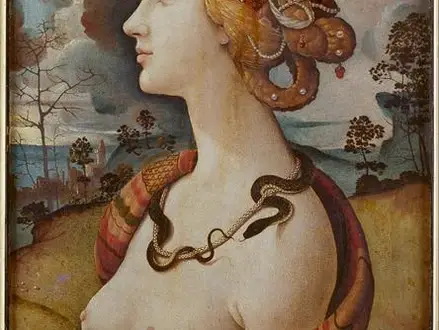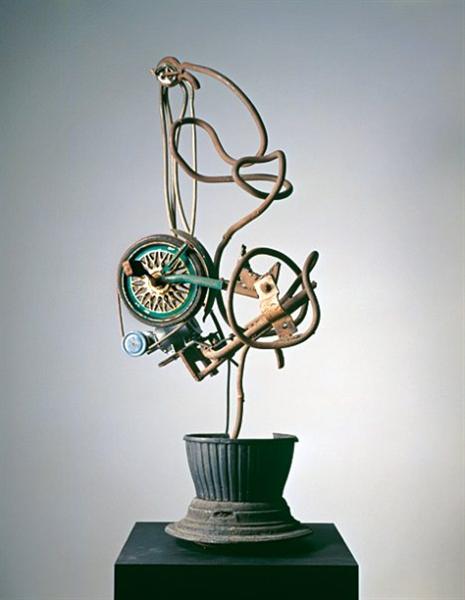Title of Artwork: “Portrait of a Woman, said to be of Simonetta Vespucci”

Artwork by Piero di Cosimo
Year Created 1490
Summary of Portrait of a Woman, said to be of Simonetta Vespucci
Oil on canvas (57×42 cm) portrait of Simonetta Vespucci by Italian Renaissance painter Piero di Cosimo is estimated to have been completed in the early 1500s. Chantilly, France’s Musée Condé has it on display.
All About Portrait of a Woman, said to be of Simonetta Vespucci
When she was 15 or 16, Simonetta Vespucci, a Genoese noblewoman, married Marco Vespucci of Florence. She was widely considered the finest beauty of her day, at least in Florence. After her untimely death in 1476 at the young age of 23, she was hailed as a goddess of beauty throughout Florence. The Birth of Venus by Sandro Botticelli influenced Piero di Cosimo, who was a devoted fan of the artist’s work.
A little girl is depicted in half-length profile, looking to the left. Her breasts are exposed and a snake is entwined around her necklace. The vast countryside in the background alternates between desert and lush sections.
The dark clouds and the dead tree in the background are both symbols of her early death. The inscription reads: SIMONETTA IANUENSIS VESPUCCIA and is inscribed in a style similar to carved lettering popularised by the Flemish painter Jan van Eyck in the early nineteenth century.
The contrast between the black clouds and the clear complexion of the face is striking. Traditionally, it has been attributed to Simonetta. The toplessness and snake, which he associated with Cleopatra’s assassination by an asp, drew Giorgio Vasari’s attention as a possible Cleopatra impersonation.
It is more likely that the iconography of this portrait comes from late Classical antiquity, when the snake, especially when biting its own tail, symbolised the cycle of time and rejuvenation, and was thus associated with Janus, Roman god of the new year, and Saturn because his Greek name Kronos was conflated with Chronos (meaning “time”).
Simonetta is referred to as Januensis by the inscription. – (of Genoa, but the variant spelling punning on Janus). Prudentia’s snake was also a sign of Simonetta’s wisdom, so this may be interpreted as a compliment.
It’s also possible that she is shown as Proserpina with the serpent as a sign of paganism’s belief in resurrection.
She is depicted in a 15th-century style bust that is slightly tilted toward the viewer, and her shoulders are adorned with an embroidered fabric. In today’s society, Schneider claims, her bare breasts would not have been offensive to viewers. Venus Pudica, or the “chaste” Venus, was the inspiration for the topless Venus in Paris Bordone’s allegories of lovers (c. 1550).
It’s hard to believe how pure her features are. In keeping with the shaved hairline trend of the period, the brows are high. Intricately braided and bedecked with ribbons, jewels, and pearls, the hairdo resembles that of a married woman.
Information Citations
En.wikipedia.org, https://en.wikipedia.org/.
























